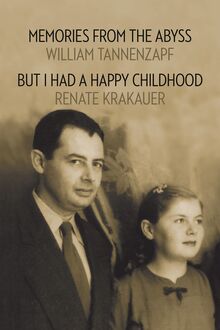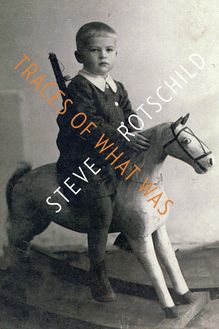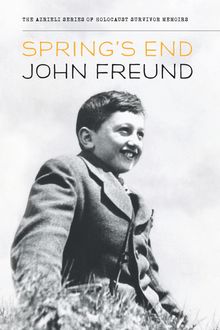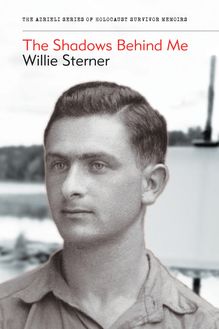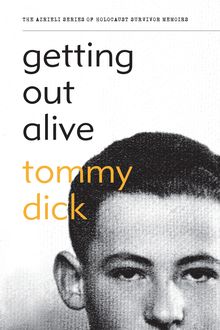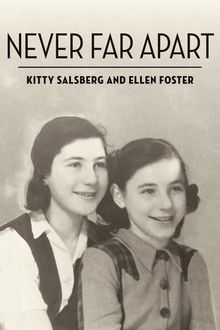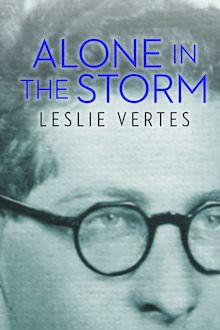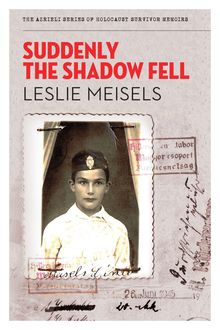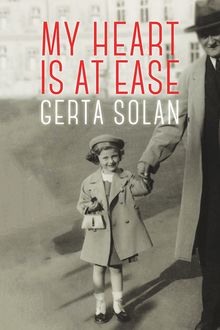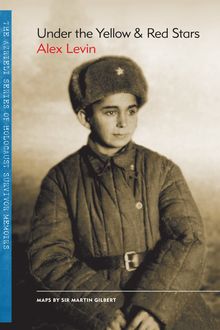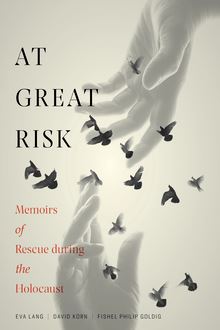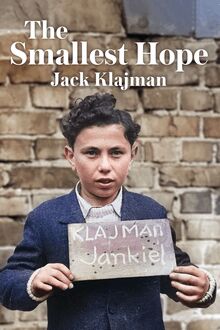From Generation to Generation , livre ebook
153
pages
English
Ebooks
2012
Vous pourrez modifier la taille du texte de cet ouvrage
Obtenez un accès à la bibliothèque pour le consulter en ligne En savoir plus
Découvre YouScribe et accède à tout notre catalogue !
Découvre YouScribe et accède à tout notre catalogue !
153
pages
English
Ebooks
2012
Vous pourrez modifier la taille du texte de cet ouvrage
Obtenez un accès à la bibliothèque pour le consulter en ligne En savoir plus
Publié par
Date de parution
01 septembre 2012
Nombre de lectures
7
EAN13
9781897470688
Langue
English
Poids de l'ouvrage
2 Mo
Hiding from the Nazis in the forests of Slovakia’s Low Tatra Mountains in the fall of 1944, in constant danger from the Germans occupying nearby villages, fourteen-year-old Agnes Grossmann and her family made the daring decision to escape high into the mountains and hike along treacherous ice-covered peaks to safety. Twenty-four years later, Agnes Tomasov — then married with two children — found herself on the run from post-war Czechoslovakia’s Communist regime and defected to Canada with her family, carrying only what they could fit in two suitcases.
Publié par
Date de parution
01 septembre 2012
EAN13
9781897470688
Langue
English
Poids de l'ouvrage
2 Mo
From Generation to Generation
Agnes Tomasov
The Azrieli Series of Holocaust Survivor Memoirs
INTERNATIONAL ADVISORY COUNCIL
Doris Bergen, Chancellor Rose and Ray Wolfe Chair in Holocaust Studies, University of Toronto
Sara R. Horowitz, Director of the Israel and Golda Koschitzky Centre for Jewish Studies, York University
Nechama Tec, Professor Emerita of Sociology, University of Connecticut
Avner Shalev, Chairman of the Yad Vashem Directorate, Jerusalem
Naomi Azrieli, Publisher
Andrea Knight, Managing Editor
Arielle Berger, Assistant Editor
Mia Spiro, Associate Editor
Elizabeth Lasserre, Senior Editor, French-Language Editions
François Blanc, Editor, French-Language Editions, and Cartographer
Aurélien Bonin, Assistant Editor / Researcher, French-Language Editions
Elin Beaumont, Program Coordinator
Tim Mackay, Program Assistant
Susan Roitman, Executive Coordinator
Mark Goldstein, Art Director
Nicolas Côté, Layout, French-Language Editions
Contents
The Azrieli Series of Holocaust Survivor Memoirs
Series Preface: In their own words...
Introduction
Historical and Geographical Timeline: Czechoslovakia 1918–1968
Dedication
Family Tree
Prologue
Family and Childhood
Living in the Forest
Starting Life Again
Finding My Destiny
A Family of My Own
In the Hands of the Secret Police
Three Dark Years
Time to Leave
A New Beginning
More Endings and More Beginnings
Epilogue
Glossary
Photographs
Copyright
About the Azrieli Foundation
Also Available
Series Preface: In their own words...
In telling these stories, the writers have liberated themselves. For so many years we did not speak about it, even when we became free people living in a free society. Now, when at last we are writing about what happened to us in this dark period of history, knowing that our stories will be read and live on, it is possible for us to feel truly free. These unique historical documents put a face on what was lost, and allow readers to grasp the enormity of what happened to six million Jews – one story at a time.
David J. Azrieli, C.M., C.Q., M.Arch Holocaust survivor and founder, The Azrieli Foundation
Since the end of World War II, over 30,000 Jewish Holocaust survivors have immigrated to Canada. Who they are, where they came from, what they experienced and how they built new lives for themselves and their families are important parts of our Canadian heritage. The Azrieli Foundation’s Holocaust Survivor Memoirs Program was established to preserve and share the memoirs written by those who survived the twentieth-century Nazi genocide of the Jews of Europe and later made their way to Canada. The program is guided by the conviction that each survivor of the Holocaust has a remarkable story to tell, and that such stories play an important role in education about tolerance and diversity.
Millions of individual stories are lost to us forever. By preserving the stories written by survivors and making them widely available to a broad audience, the Azrieli Series of Holocaust Survivor Memoirs seeks to sustain the memory of all those who perished at the hands of hatred, abetted by indifference and apathy. The personal accounts of those who survived against all odds are as different as the people who wrote them, but all demonstrate the courage, strength, wit and luck that it took to prevail and survive in such terrible adversity. The memoirs are also moving tributes to people – strangers and friends – who risked their lives to help others, and who, through acts of kindness and decency in the darkest of moments, frequently helped the persecuted maintain faith in humanity and courage to endure. These accounts offer inspiration to all, as does the survivors’ desire to share their experiences so that new generations can learn from them.
The Holocaust Survivor Memoirs Program collects, archives and publishes these distinctive records and the print editions are available free of charge to libraries, educational institutions and Holocaust-education programs across Canada, and to the general public at Azrieli Foundation educational events. Online editions of the books are available free of charge on our web site, www.azrielifoundation.org .
The Azrieli Foundation would like to express appreciation to the following people for their invaluable efforts in producing this series: Mary Arvanitakis, Josée Bégaud, Florence Buathier, Franklin Carter, Mark Celinscack, Darrel Dickson (Maracle Press), Andrea Geddes Poole, Sir Martin Gilbert, Pascale Goulias-Didiez, Stan Greenspan, Karen Helm, Carson Phillips, Pearl Saban, Jody Spiegel, Erika Tucker, Lise Viens, and Margie Wolfe and Emma Rodgers of Second Story Press.
Introduction
It has been said in jest that what history teaches most is that here and now is better than then and there. For some people, this is not a joke and it is certainly not a joke to Agnes Tomasov. In her boldly honest memoir, From Generation to Generation , Agnes shares the story of her life, a life repeatedly buffeted by cruel winds of history. As if to prove that life’s struggles are never apportioned equally, Agnes survived the Holocaust, suffered an iron-fisted Communist regime that willfully encouraged antisemitism as state policy, was crushed by the false hope of liberating reform in her homeland and endured the doubts and insecurities that beset those who are forced to begin a new life in a strange land. And in the end, she succeeded. She built a new life for herself and her family, a life secure and sheltered in a land governed by the rule of law.
Agnes tells her story through the eye of memory – memory of events, places and experiences to which she was witness – and memory that to this day, for Agnes, remains as close to her as her own breath. And her memory has not dulled with time – on the contrary, it is as remarkable in its clarity as her memoir is in its candour. At the same time, as with each of us, Agnes’s memories are inevitably the stored remembrance of past experience – what she did, heard and saw. As much as she remembers, she cannot describe first-hand what lay beyond her peripheral vision, that is, the larger historical context – international, national and local – within which Agnes’s own history unfolded. The broad outline of that history is important to readers of this memoir and this introduction modestly attempts to provide something of that larger historical context. It is offered as a complement to Agnes’s own moving story.
If our earlier years are the platform on which we build our adult lives, Agnes’s early years are telling. She was born Agnes Grossmann on June 16, 1930, in Bardejov in northeastern Czechoslovakia. Her mother, Katka Kohn Grossmann, died when Agnes was only two years old and she was barely three when her father married a woman who showed Agnes little warmth. Her brother, Ivan, was born a year later in 1934. Although Agnes was close to her brother, she found the greatest comfort in summers spent with her mother’s family – her grandparents Zelma and Armin Kohn and her beloved uncles Jozko and Bandi – in Levice, close to the Czechoslovak border with Hungary. In 1938, Agnes spent her last carefree summer with her Levice family. Within a year, Levice would no longer be part of Czechoslovakia; Czechoslovakia would no longer be an independent state, and, in many ways, Agnes’s childhood would be over.
Czechoslovakia was cobbled together out of provinces of the former Austro-Hungarian Empire in the aftermath of World War I . The new country enjoyed relative political stability through the 1920s and into the 1930s. This is not to say that Czechoslovakia was problem-free. Particularly difficult were minority ethnic and linguistic divisions. When Czechoslovakia was founded, its population included Czechs and Slovaks as well as large German, Polish and Hungarian-speaking minorities concentrated on Czechoslovakia’s borders. While they were citizens of Czechoslovakia, each of these national minority groups harboured irredentist political movements pressing not just for regional language and cultural autonomy, but also for the political transfer of their particular region to what they regarded as their respective national and linguistic homelands – Germany, Hungary and Poland.
This issue of irredentism grew increasingly acute after the Nazis assumed power in Germany in 1933. Nazi policy called for ingathering of peoples and territories Germany claimed were inherently German, areas populated by German Volk , and it was a policy put into practice. In 1935, following a local referendum on unification, Germany unilaterally absorbed the Saar region that had been administered under a League of Nations mandate since the end of World War I . A year later, in violation of the Treaty of Versailles that ended World War I , the German military marched into the demilitarized Rhineland and Hitler again “legitimized” the takeover by staging a referendum, this time an after-the-fact referendum. In March 1938, after a series of provocative moves, Hitler sent his troops into his native Austria and announced its annexation to Germany. With Nazi troops securing the seizure, yet another popular referendum was staged to validate the takeover. None of these Nazi moves met with major resistance from either the local populations or censure by the countries that had defeated Germany in World War I .
Hitler next turned his attention to Czechoslovakia. In the name of “reclaiming” Germans into a greater Germany, Hitler demanded that the Sudetenland, with its large ethnic-German minority, be ceded to Germany. The Czechoslovak government would have none of it but in Munich in March 1938, Britain and France, fearing war with Germany and hoping Hitler’s expansionist appetite
